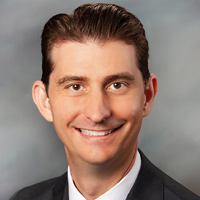
There are over 33 million small businesses in the U.S., which employ more than 60 million workers. This means that close to half of all the workers in the U.S. (46%) could potentially be affected by the new rules in Secure 2.0 aimed at small businesses.
The new rules are largely aimed at making it easier for businesses to offer workplace retirement plans to their employees. The advisor community has an obligation to educate our business-owner clients about the new regulations and how they can implement them for their employees’ benefit.
New tax credits for small employers
First things first. If a small business owner doesn’t already have a retirement plan, they must start one to reap the benefits. Beginning this year, new plans with up to 50 employees can get a tax credit up to 100% of the plan’s startup costs, spread out over three years — with up to a $5,000 credit per year. These businesses can also receive an additional tax credit of up to $1,000 per employee to help defray the costs of employer contributions.
Also, effective this year, employers with SIMPLE and SEP IRAs can offer Roth contributions as an option for employee deferrals. In addition, employer contributions can be made on an after-tax Roth basis. I discussed in greater detail the new Roth provisions of Secure 2.0 here. Beginning in 2024, employers with SIMPLE IRA plans have the option to make non-elective contributions of up to 10% of pay or $5,000 (indexed for inflation,) whichever is less.
Starter 401(k) plans coming
In 2024, businesses that don’t have a retirement plan can offer a new kind of plan called a starter 401(k). The starter 401(k) will have slightly different rules than a regular 401(k) and will ultimately be less cumbersome and costly to operate.
Employees must be automatically enrolled into the plan with a salary deferral range between 3% and 15%, but can opt out if they don’t want to participate. I’m a big fan of the auto enrollment requirement, and am pleased that starting in 2025, many newly established regular 401(k) and 403(b) plans will be required to auto enroll employees. There are exceptions for businesses with less than 10 employees, church and governmental plans, and businesses that have been established less than three years.
Two other unique features of the starter 401(k) that I’m not so excited about are that employer contributions won’t be allowed and the annual contribution limits for employees will be the same as those for traditional and Roth IRAs rather than the much higher regular 401(k) limits. These aspects will make it tough for employees to build significant balances and will make the starter 401(k) plan unpopular among higher wage earners. But as the name indicates, the plans can be a good starting point for a new business.
Emergency savings accounts
Also starting next year, plan sponsors can add an emergency savings account to their retirement plan. Nicknamed “sidecar” accounts, emergency savings will be held in a separate account within a worker’s retirement plan and will accept only after-tax employee contributions.
The rule has several aspects, but I’ll highlight a few significant ones. In particular, these accounts will not be subject to the 10% early withdrawal penalty, but employees can only contribute up to $2,500. The accounts can grow past $2,500, but must be invested in “principal protected” assets like U.S. Treasury bonds and money market funds. I admit I don’t like the idea of easy access. The reality is that we are often our own worst enemy and making it easier for employees to raid their retirement accounts is generally a bad idea.
Matching payments based on student loans
On the other hand, there is a fantastic new rule starting next year that will allow employers to make matching contributions based on their employees’ student loan payments. It works like this: The employee makes qualifying student loan payments, and the employer can treat these payments as retirement plan contributions for their matching program. Companies can make these contributions even if an employee doesn’t contribute to their retirement-plan account. Many millennial and Gen Z workers are so crushed under their student loans that they don’t feel they can afford to contribute to their retirement plans. This new feature will allow them to pay their loans while their employers match those payments with a retirement-account contribution.
Part-timer benefits
Beginning in 2025, Secure 2.0 allows part-time employees who have worked two consecutive years for a company (at least 500 hours a year) to participate in its 401(k) or 403(b) plan. This is down from the current three consecutive years.
In all, these new features are meant to entice both employers and employees to think long term and will make it easier for millions of Americans to contribute money to employer-sponsored retirement plans. Financial advisors have a unique ability to educate business owners on the new rules. It’s never been easier for a small business to implement a retirement plan for its employees. Let’s spread the word.
DJ Hunt, CFP is a fee-only financial advisor with Moisand Fitzgerald Tamayo, LLC. in Melbourne, Florida. His clients include working professionals, business owners and retirees. DJ can be reached at dj@moisandfitzgerald.com.







